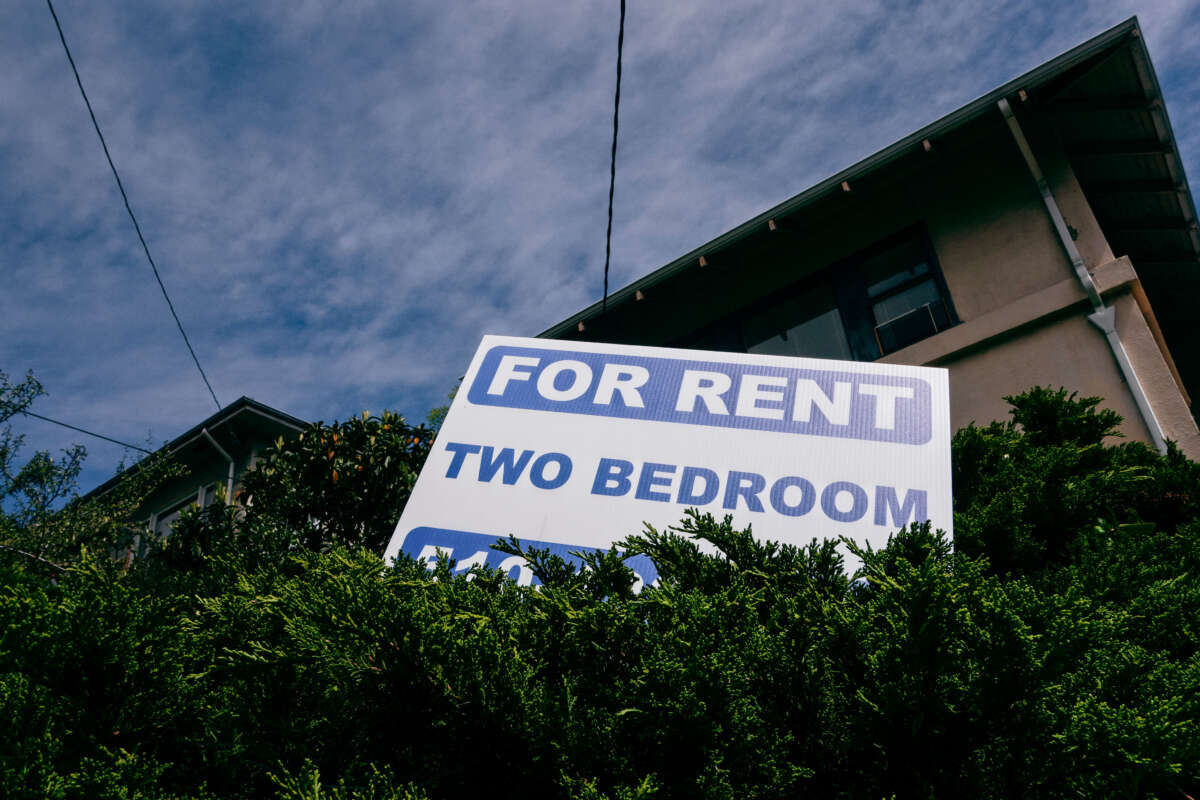Support justice-driven, accurate and transparent news — make a quick donation to Truthout today!
With soaring real estate and housing prices in recent years, housing affordability rates hit a record high in 2022, with half of renters qualifying as “cost-burdened,” new research finds.
According to a report by the Joint Center for Housing Studies of Harvard University published Thursday, there were a record 22.4 million households in which renters paid more than 30 percent of their income in 2022, which is the general standard for housing unaffordability employed by academics and the government. This is an increase of 3.2 percent since 2019, with 2 million more households being cost-burdened.
Of these households, half of them, or 12.1 million, were severely burdened, meaning that they were spending more than half of their incomes on rents.
The share of cost-burdened households rose most significantly among middle-income households with incomes ranging between $30,000 to $75,000, the research found. Households with incomes lower than $30,000, a group already disproportionately likely to face housing price burdens, also saw an increase, with 1.5 percent more households with unaffordable rates.
The rise in unaffordability is due to historic increases in housing prices in recent years in combination with decades-long wage stagnation. The research found that, while median rents rose by 21 percent between 2001 and 2022, adjusting for inflation, renters’ incomes rose by only 2 percent.
Households with incomes lower than $30,000 already struggle the most with paying higher proportions of their rents, and this combination has hit them hardest; the researchers found that this group’s median residual income after paying rent and other needs like utilities was a record low of only $310 a month, a decrease of 47 percent since 2001. By contrast, the Economic Policy Institute says that, even in the most affordable areas, a single-person household needs $2,000 a month after housing for basic needs.
Meanwhile, homelessness has reached record heights, with evictions increasing after the early pandemic-era eviction moratorium expired in 2021 and states ran out of rental assistance funds; since then, few policies have been put in place to prevent further housing instability. As of January 2023, over 653,000 people are experiencing homelessness in the U.S., a record high — with 71,000 people driven into homelessness in just the past year.
Measures put in place in response to the pandemic had helped renters significantly, but now, with soaring housing costs, the “need for rental assistance remains greater than ever,” the report notes.
With expiring resources for housing, the “housing safety net is once again overwhelmed and underfunded,” Chris Herbert, managing director for the Joint Center for Housing Studies, said in a press release. “And while states and localities have acted to fill some of the gaps, a larger commitment from the federal government is required to expand housing supports and preserve and improve the existing affordable stock. Only then will the nation finally make a meaningful dent in the housing affordability crisis making life so difficult for millions of people.”
Press freedom is under attack
As Trump cracks down on political speech, independent media is increasingly necessary.
Truthout produces reporting you won’t see in the mainstream: journalism from the frontlines of global conflict, interviews with grassroots movement leaders, high-quality legal analysis and more.
Our work is possible thanks to reader support. Help Truthout catalyze change and social justice — make a tax-deductible monthly or one-time donation today.
